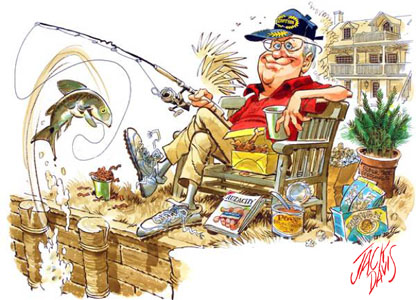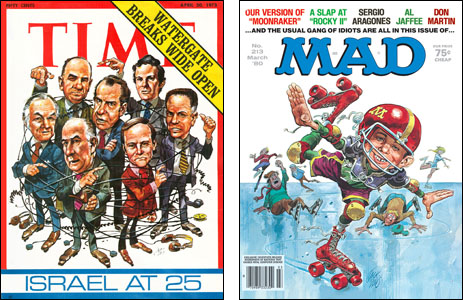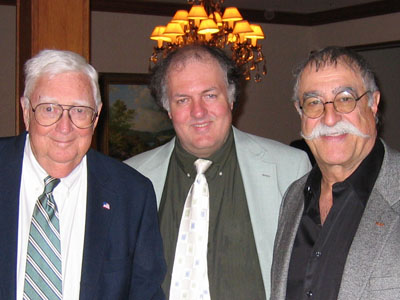
One of America's all-time great cartoonists has left us at the age of 91. Jack Davis made his initial fame in EC Comics like Tales from the Crypt and MAD but went on to become one of the most visible (and imitated) creators of advertising, movie posters and record album covers ever. His ability to make anything funnier when he drew it and his keen eye for caricatures could be seen darn near everywhere in this country for well more than half a century.
Jack Davis was born in Atlanta, Georgia on December 2, 1924. His first drawing in print was a small sketch that ran in Tip Top Comics in the thirties. It was on a page that printed reader contributions and he was not the only soon-to-be-famous cartoonist who first saw a drawing of his published there. So did Mort (Beetle Bailey) Walker and Davis's soon-to-be collaborator/employer, Harvey Kurtzman.
Davis attended the University of Georgia and his work on the campus newspaper (and an independent humor publication) got him an intern job at the Atlanta Journal which in turn led to assistant work on the newspaper strip, Mark Trail and later on The Saint.
In 1950, he hooked up with EC Comics and became one of the firm's most popular artists on its popular line of horror, crime, war and humor comics. Davis could do any of those but it was the funny stuff he did for MAD that really set him apart from the pack. When MAD's first editor Harvey Kurtzman left, Davis followed him to other humor periodicals (all short-lived) but returned to MAD in the mid-sixties. By then, he also had a steady flow of work for movie posters, record album covers, magazine covers (including Time) and other commercial venues.

His poster for the 1963 movie It's a Mad, Mad, Mad, Mad World wasn't his first film job but it was the one that everyone noticed. Thereafter, a hefty percentage of folks marketing comedy films — especially those with large casts of well-known comedians — turned to Davis for their key art. Just as there are performers who have made good careers impersonating Elvis Presley or The Beatles, there are artists whose livelihoods have involved outputting commercial art more or less in the Jack Davis style.
I loved everything he drew but Jack was not fond of some of them. He was great at horror comics but uncomfortable with the subject matter. He turned up occasionally in Playboy, often assisting on his friend Harvey Kurtzman's "Little Annie Fanny," but didn't much like the magazine or its hedonist philosophy. He eventually stopped drawing for MAD partly because of his advanced age but partly because he didn't like its politics or a subtle trend he perceived towards raunchiness. He also just plain wanted to take it easy, drawing when and what he felt like drawing. (One job he was very glad to do was for the U.S. government in 1989: A postage stamp he drew to honor postal carriers.)

Mr. Davis won every award he could possibly win for cartooning and was widely-loved and respected among his peers. The photo above was taken at a 2006 dinner held in his honor in Los Angeles by the Comic Art Professional Society. That's Jack on the left, me in the middle and the guy at right is Jack's friend and fellow MAD artist, Sergio Aragonés. I always found Jack to be a delightful man — cheery and gentle with what is generally described as old-school Southern Manners. He loved talking about the Civil War and old monster movies and his fellow cartoonists, all of whom he loved. He was truly as adored as his cartooning was, and that's a lot of adoration.
There was something about his art that just plain made you smile, starting with the fact that there was no meanness whatsoever in his caricatures. He didn't like all the politicians he drew for magazine covers but you wouldn't know it from his renderings. He made every movie he drew look a little funnier and livelier. I have the original to one of his movie posters on a wall in my home and everyone who sees it — artists, writers, my plumber, my electrician, etc. — knows that style and grins when they see it. That's a great legacy to leave behind.
You can see a lot of Jack's work on this page and this page and this page and this page. See if there's one drawing there that doesn't make you smile.